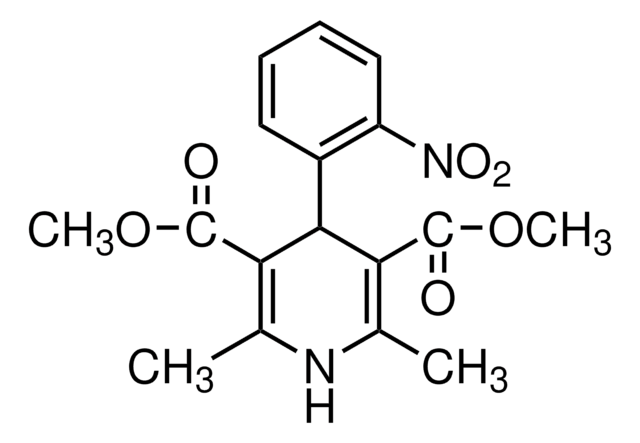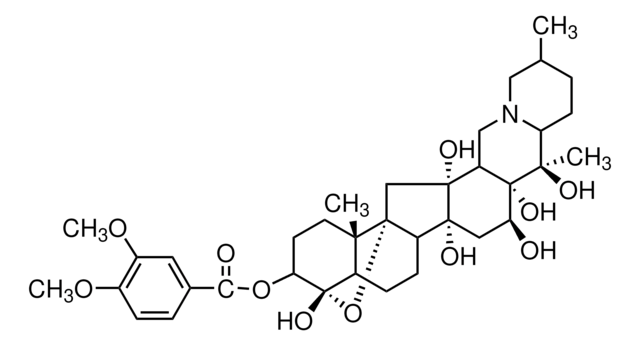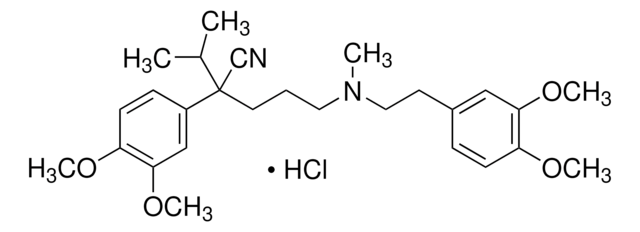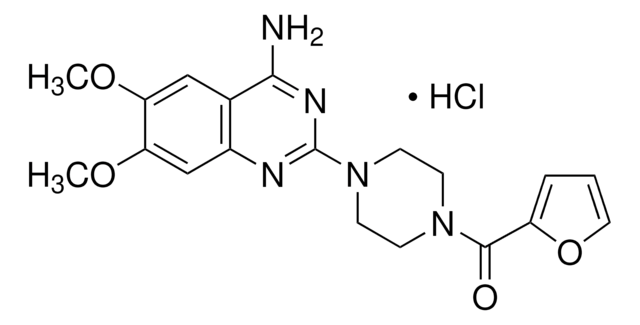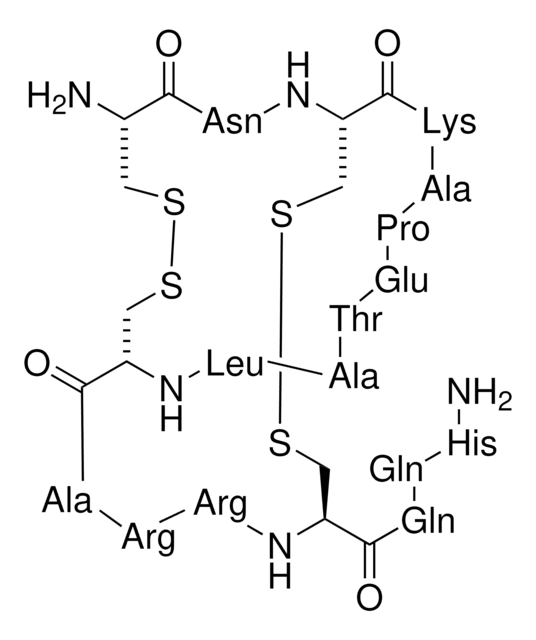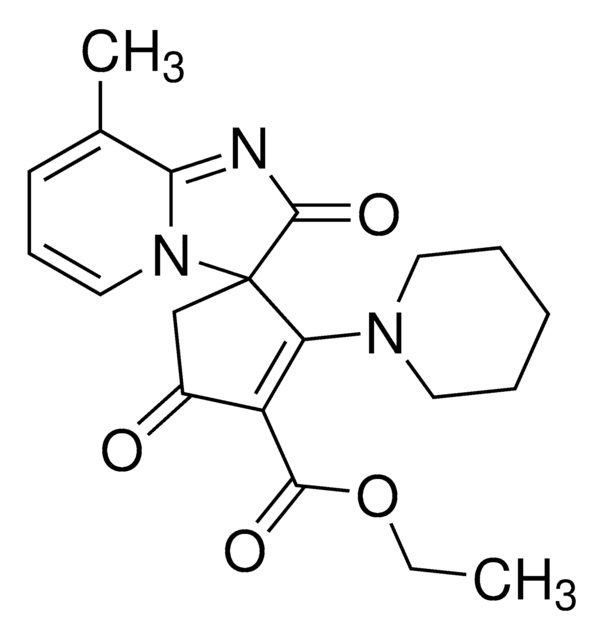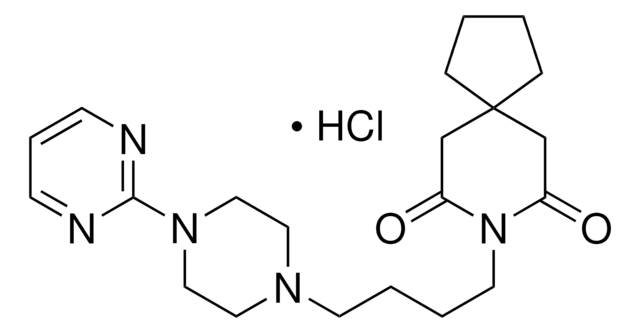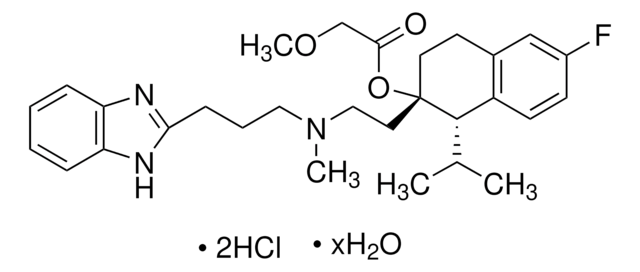Wichtige Dokumente
SML0385
ML218
≥98% (HPLC)
Synonym(e):
3,5-Dichloro-N-[[(1α,5α,6-exo,6α)-3-(3,3-dimethylbutyl)-3-azabicyclo[3.1.0]hex-6-yl]methyl]benzamide, CID 45115620, VU0413807, VU0424199-1
About This Item
Empfohlene Produkte
Qualitätsniveau
Assay
≥98% (HPLC)
Form
powder
Farbe
white to beige
Löslichkeit
DMSO: 10 mg/mL (clear solution)
Lagertemp.
2-8°C
SMILES String
CC(C)(C)CCN1C[C@H]2C(CNC(=O)c3cc(Cl)cc(Cl)c3)[C@H]2C1
InChI
1S/C19H26Cl2N2O/c1-19(2,3)4-5-23-10-16-15(17(16)11-23)9-22-18(24)12-6-13(20)8-14(21)7-12/h6-8,15-17H,4-5,9-11H2,1-3H3,(H,22,24)/t15-,16-,17+
InChIKey
GSJIGYLGKSBYBC-OSYLJGHBSA-N
Anwendung
- T-type channel blocker to test its effect on the nociceptive behavior associated with homocysteinemia rats
- T-type voltage-sensitive calcium channel (VSCC) inhibitor in osteoblasts
- T-type calcium channel blocker to test its effect on the viability of neural progenitor cells
Biochem./physiol. Wirkung
Leistungsmerkmale und Vorteile
Lagerklassenschlüssel
11 - Combustible Solids
WGK
WGK 3
Flammpunkt (°F)
Not applicable
Flammpunkt (°C)
Not applicable
Hier finden Sie alle aktuellen Versionen:
Analysenzertifikate (COA)
Die passende Version wird nicht angezeigt?
Wenn Sie eine bestimmte Version benötigen, können Sie anhand der Lot- oder Chargennummer nach einem spezifischen Zertifikat suchen.
Besitzen Sie dieses Produkt bereits?
In der Dokumentenbibliothek finden Sie die Dokumentation zu den Produkten, die Sie kürzlich erworben haben.
Artikel
We offers many products related to calcium channels for your research needs.
Unser Team von Wissenschaftlern verfügt über Erfahrung in allen Forschungsbereichen einschließlich Life Science, Materialwissenschaften, chemischer Synthese, Chromatographie, Analytik und vielen mehr..
Setzen Sie sich mit dem technischen Dienst in Verbindung.